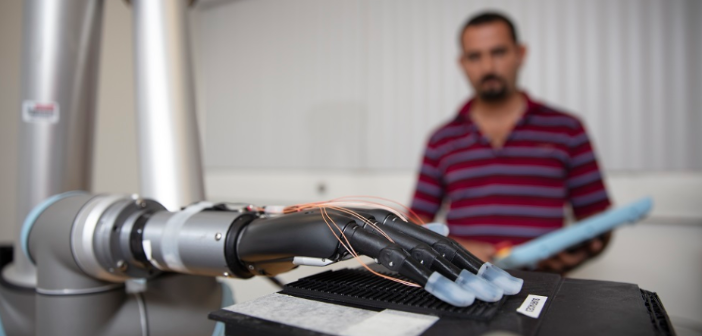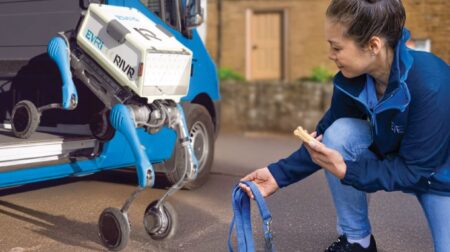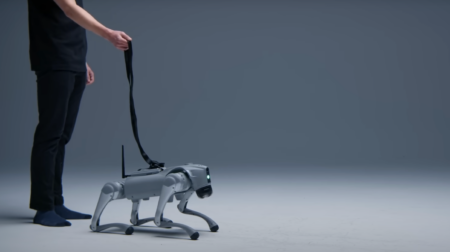Researchers from Florida Atlantic University’s College of Engineering and Computer Science have developed liquid metal sensors which when combined with AI could enable prosthetic hands to gain a sense of touch.
To enable a more natural feeling prosthetic hand interface, researchers and collaborators incorporated stretchable tactile sensors using liquid metal on the fingertips of a prosthetic hand. Encapsulated within silicone-based elastomers, this technology provides advantages over traditional sensors, including high conductivity, compliance, flexibility and stretchability.
According to the study, recently published in the journal Sensors, this hierarchical multi-finger tactile sensation integration could provide a higher level of intelligence for artificial hands.
The project used individual fingertips on the prosthesis to distinguish between different speeds of a sliding motion along different textured surfaces. The four different textures had one variable parameter: the distance between the ridges.
To detect the textures and speeds, researchers trained four machine learning algorithms. For each of the ten surfaces, 20 trials were collected to test the ability of the machine learning algorithms to distinguish between the ten different complex surfaces comprised of randomly generated permutations of four different textures.
Results showed that the integration of tactile information from liquid metal sensors on four prosthetic hand fingertips simultaneously distinguished between complex, multi-textured surfaces – demonstrating a new form of hierarchical intelligence.
The machine learning algorithms were able to distinguish between all the speeds with each finger with high accuracy. This new technology could improve the control of prosthetic hands and provide haptic feedback, more commonly known as the experience of touch, for amputees to reconnect a previously severed sense of touch.
“Significant research has been done on tactile sensors for artificial hands, but there is still a need for advances in lightweight, low-cost, robust multimodal tactile sensors,” said Erik Engeberg, senior author, and an associate professor in the department of ocean and mechanical engineering.
“The tactile information from all the individual fingertips in our study provided the foundation for a higher hand-level of perception enabling the distinction between ten complex, multi-textured surfaces that would not have been possible using purely local information from an individual fingertip.
“We believe that these tactile details could be useful in the future to afford a more realistic experience for prosthetic hand users through an advanced haptic display, which could enrich the amputee-prosthesis interface and prevent amputees from abandoning their prosthetic hand.”








